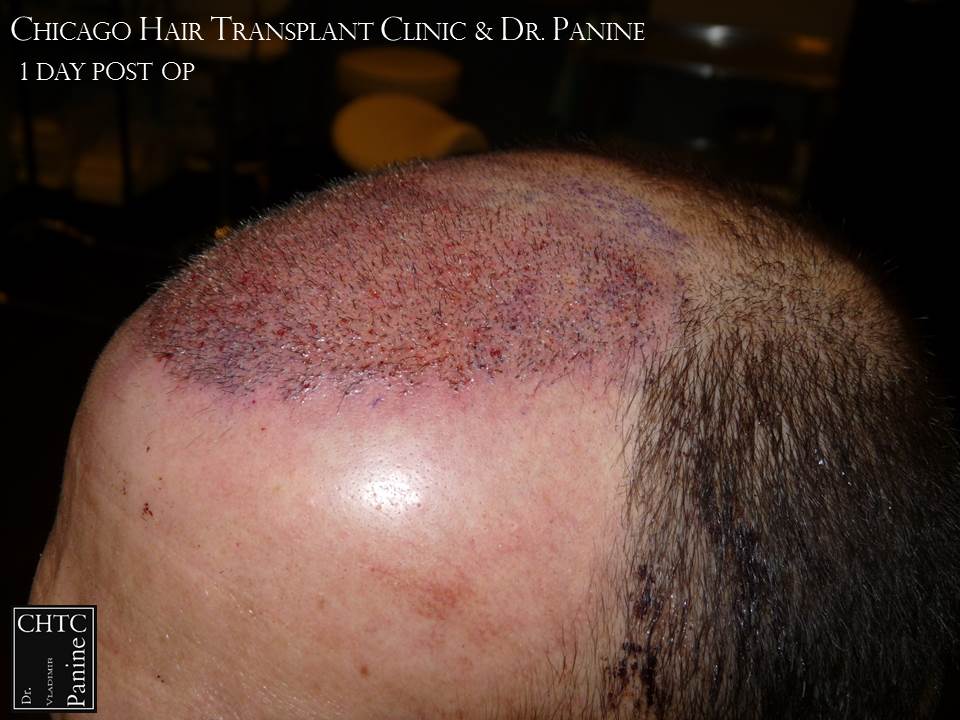This 34 year old gentleman had a hair losspattern similar to a class 4v on the Hamilton Norwood hair loss scale. His goalwas simple; rebuild his hairline and add density to the frontal 1/2. That said,he also wanted to be able to keep his hair short without anyone detecting thathe had a procedure done.
I explained to him that he would have adramatic result and his overall goals could be accomplished after one procedure.I also explained that if he wanted more density in the back Ĺ he would needanother procedure.
After establishing his medical historyand understanding the progression of his hair loss, I diagnosed his conditionas Androgenetic Alopecia (male pattern baldness), ruling out any other possibledermatological or medical conditions which can cause hair loss. During thediscussion with the patient regarding his surgery I conveyed to him that myintent was to reconstruct a hairline that would be suitable for him now, butalso something that will look good as he gets older. This is a critical issuewhich needs to be discussed when planning any work on the hairline.
A total of 3,981 grafts were used. The breakdown was as follows: 1,307 single hair grafts, 2,652 two hair grafts and 22 three hair grafts.
I used significantly more single hairfollicular units which allowed me to create a very natural hairline. A naturalhairline is essential in making a patient happy; it gives them confidence. Whena patient has undergone a surgery they need to feel comfortable combing their hair/stylingtheir hair in front of others as well as undertaking water sports or swimmingaround other people. A natural hairline cements this feeling of comfort andallows patients to experience a more carefree lifestyle.
These are the patientís results 10 monthspost-op. There will continue to be more improvement over the next few months. As Iím sure youíve gathered, the patient isextremely happy with his results.
























I explained to him that he would have adramatic result and his overall goals could be accomplished after one procedure.I also explained that if he wanted more density in the back Ĺ he would needanother procedure.
After establishing his medical historyand understanding the progression of his hair loss, I diagnosed his conditionas Androgenetic Alopecia (male pattern baldness), ruling out any other possibledermatological or medical conditions which can cause hair loss. During thediscussion with the patient regarding his surgery I conveyed to him that myintent was to reconstruct a hairline that would be suitable for him now, butalso something that will look good as he gets older. This is a critical issuewhich needs to be discussed when planning any work on the hairline.
A total of 3,981 grafts were used. The breakdown was as follows: 1,307 single hair grafts, 2,652 two hair grafts and 22 three hair grafts.
I used significantly more single hairfollicular units which allowed me to create a very natural hairline. A naturalhairline is essential in making a patient happy; it gives them confidence. Whena patient has undergone a surgery they need to feel comfortable combing their hair/stylingtheir hair in front of others as well as undertaking water sports or swimmingaround other people. A natural hairline cements this feeling of comfort andallows patients to experience a more carefree lifestyle.
These are the patientís results 10 monthspost-op. There will continue to be more improvement over the next few months. As Iím sure youíve gathered, the patient isextremely happy with his results.